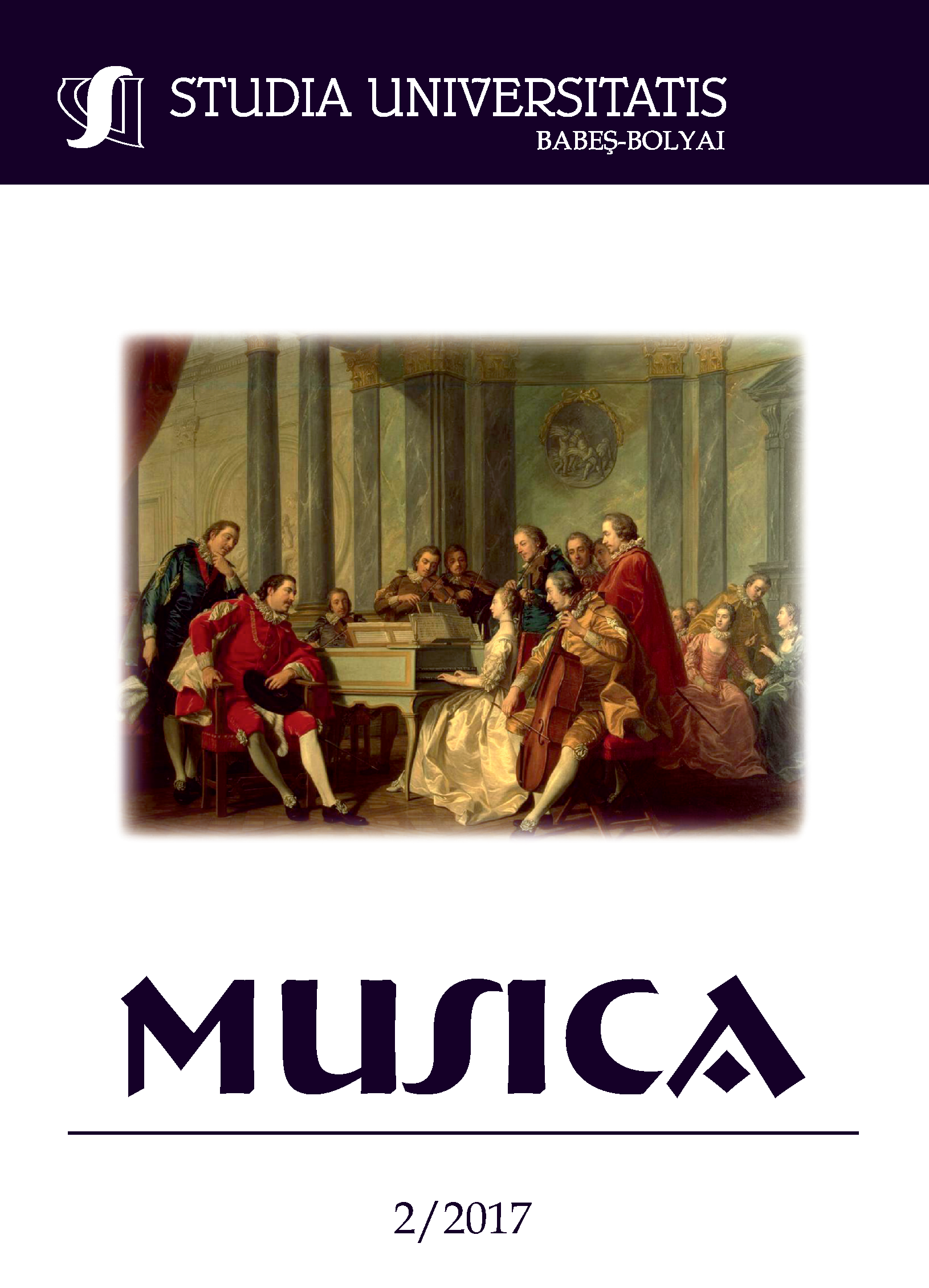ANXIETY ENCODED IN PERSONALITY: MUSICAL PERSONALITY AND THE ANXIETY OF THE MUSICIANS
DOI:
https://doi.org/10.24193/subbmusica.2017.2.02Keywords:
musical personality, anxiety, performance, music, psychology.Abstract
The aim of the study is to provide a brief introduction to the cultural history of the personality psychological based findings of the musical profession. As we can see, in the different historical areas very wide variety of views appeared, until in the second half of 20th century music psychology, as evidence based empirical discipline formalised these naive theories. The most important findings were that the personality structure of musicians is fundamentally differs from the normal population (1); and the constantly reported higher level of anxiety-related traits in the case of musicians (2). The latter finding highlights the importance of teaching different techniques of mental hygienical interventions during the music teacher training courses in order to avoid psychopathological symptomatizing and the short-term burn-out of career entrant teachers.References
Bagdy, E., Stresszkezelés és relaxáció alkalmazása a testnevelésben (The Application of Stress-management and Relaxation in Physical-Education), Budapest, Hungary, Magyar Diáksport Szövetség (Hungarian Student-sport Association), 2014, pp. 1-104.
Bagdy, E., Relaxáció, megnyugvás, belső béke (Relaxation, Relief, Inner Peace), Budapest, Hungary, Kucslyuk Kiadó, 2014, pp. 1-128.
Bandi, Sz., Zene és személyiség (Music and Personality), In: Vas, B. (Ed.), Zenepszichológia tankönyv (Handbook of Music Psychology), Pécs, Hungary, University of Pécs – Faculty of Arts – Institute of Musical Arts, 2015, pp. 145-165.
Carver, C.S., Scheier, M. F., Perspectives on Personality, Oxford, UK, Pearson, 2012, pp. 1-12.
Chesire, N.M. The empire of the ear: Freud’s problem with music, International Journal of Psychoanalysis, 77, 1996, pp. 1127-1168.
Cohen, S., Wills, T.A., Stress, Social Support, and the Buffering Hypothesis, Psychological Bulletin, 1985, 98, 2, pp. 310-357.
Greenberg, D.M., Rentfrow, P.J., Baron-Cohen, S. Can Music Increase Empathy? Interpreting Musical Experience through the Empathizing– Systemizing (E-S) Theory: Implications For Autism, Empirical Musicology Review, 2015, pp. 80-95.
Illing, H.A., The Haunting Melody. Psychoanalytic Experiences in Life and Music by Theodor Reik, International Journal of Group Psychotherapy, 5(3), p. 326.
Kabat-Zinn, J. Wherever You Go, There You Are: Mindfulness Meditation in Everyday Life, New York, NJ, Hachette Books, 1994, pp.1-282.
Kemp, A.E., The Personality Structure of the Musician: I. Identifying a Profile of Traits for the Performer, Psychology of Music, 9, 1981a, pp. 3-14.
Kemp, A.E., The Personality Structure of the Musician: II. Identifying a Profile of Traits for the Composer, Psychology of Music, 9, 1981b, pp. 69-75.
Kemp, A.E., The Personality Structure of the Musician: III. The Significance of Sex Differences, Psychology of Music, 10, 1982, pp. 48-58.
Kemp, A.E., The Musical Temperament, Oxford, UK, Oxford University Press, 1996, pp. 1-283.
Mirnics, Zs., A személyiség építőkövei: típus-, vonás- és biológiai elméletek (The Bricks of the Personality: Typological-, Trait- and Biological Theories), Budapest, Hungary, Bölcsész Konzorcium (Humanitiy Consortium), 2006, pp. 31-38.
Pinch, G., Handbook of Egyptian Mythology, Santa Barbara, CA, ABC-CLIO, 2002, pp. 194-197.
Reznikoff, I., Sound resonance in prehistoric times: A study of Paleolithic painted caves and rocks, The Journal of the Acoustical Society of America, 2008, pp. 4137-4141.
Rose, H., A Handbook of Greek Mythology, London, UK, Routledge, 2005, 88, pp. 120-121.
Steele, C.J., Bailey, A.B., Zatorre, R.J., Penhune, V.B., Early Musical Training and White-Matter Plasticity in the Corpus Callosum: Evidence for a Sensitive Period, The Journal of Neuroscience, 2013, pp. 1282-1290.
Swaminathan, S., Schellenberg, E.G. Arts education, academic achievement and cognitive ability, In: P.L. Tinio & J.K. Smith (Eds.), Cambridge Handbook of the Psychology of Aesthetics and the Arts, Cambridge, UK, Cambridge University Press. 2014, pp. 364-384.
Downloads
Published
How to Cite
Issue
Section
License
Copyright (c) 2017 Studia Universitatis Babeș-Bolyai Musica

This work is licensed under a Creative Commons Attribution-NonCommercial-NoDerivatives 4.0 International License.






